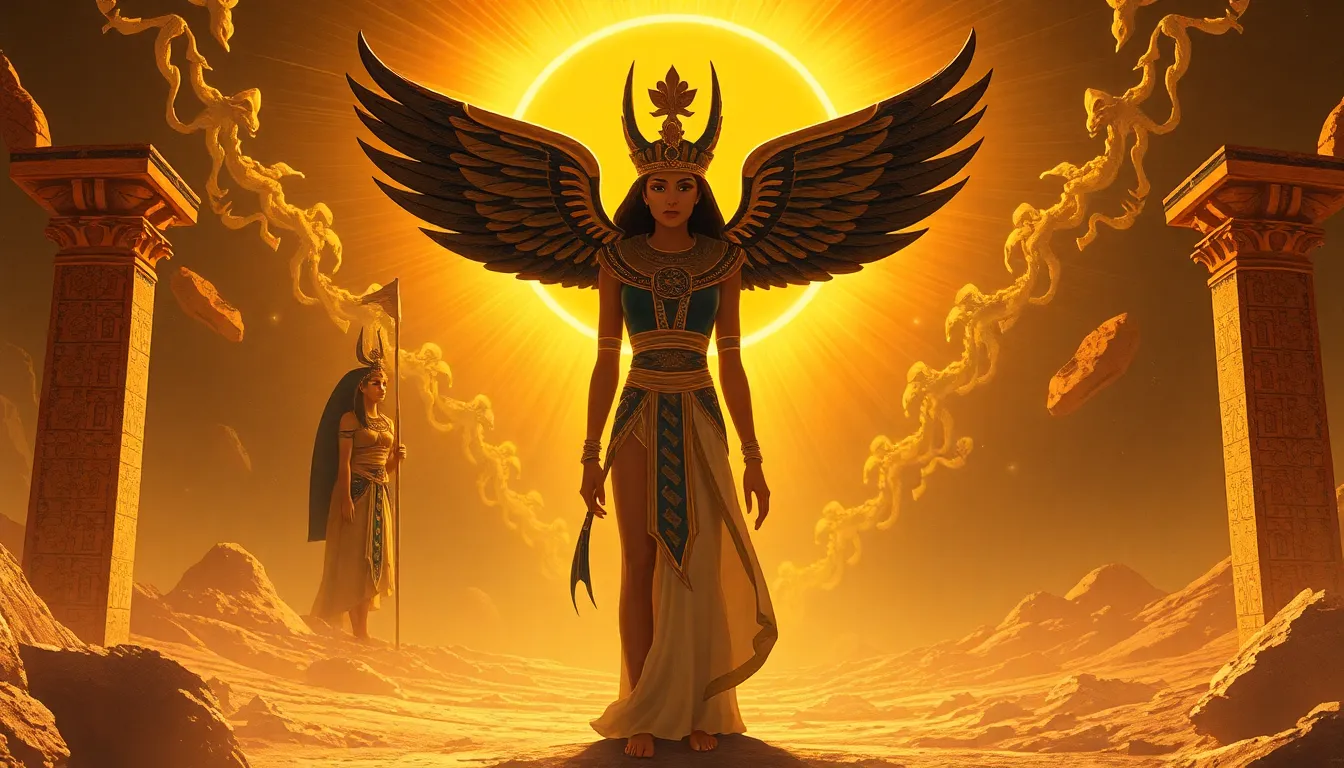The Myth of the Daughters of Ra: Goddesses of the Sun
I. Introduction
Egyptian mythology is a rich tapestry of stories and deities that reflect the ancient Egyptians’ understanding of the universe. Central to this mythology is the sun god Ra, who was revered as the source of life and order. The concept of the Daughters of Ra emerges from this framework, representing various aspects of femininity and divinity intertwined with the sun.
II. The Nature of Ra: The Sun God
Ra is one of the most significant deities in ancient Egyptian religion, often depicted with a falcon head encircled by a sun disk. His attributes and roles are multifaceted:
- Attributes and Significance: Ra embodies creation, the cycle of life, and the passage of time. He was believed to travel through the sky during the day and the underworld at night.
- Creation Myth: In the creation myth, Ra emerged from the primordial waters of Nun. He created himself and then gave birth to other gods.
- Symbolism of the Sun: The sun symbolizes life, growth, and fertility. Ra’s daily journey across the sky signifies the renewal of life each day.
III. The Daughters of Ra: Who Are They?
The Daughters of Ra are a group of goddesses associated with the sun, embodying various attributes and powers. Key goddesses include:
- Hathor: Goddess of love, beauty, music, and motherhood, often linked with joy and fertility.
- Sekhmet: The fierce lioness goddess of war and healing, representing the destructive and protective aspects of the sun.
- Bastet: Initially a lioness goddess, later depicted as a domestic cat, representing home, fertility, and protection.
Throughout different texts and periods, the names and roles of these goddesses varied, reflecting the dynamic nature of Egyptian mythology.
IV. Myths and Legends Surrounding the Daughters of Ra
The Daughters of Ra are central figures in various creation myths and legends, showcasing their importance in the cosmic order:
- Creation Myths: In some stories, the Daughters of Ra were created to assist Ra in his duties, representing different aspects of his power.
- Tales of Adventures: These goddesses often interacted with other deities, engaging in battles or alliances that shape the mythological landscape.
- Cosmic Order: Their roles often symbolize the balance between chaos and order, reflecting their importance in maintaining the stability of the universe.
V. Worship and Cult of the Daughters of Ra
The Daughters of Ra were worshipped in various forms across ancient Egypt through temples and rituals:
- Temples and Rituals: Dedicated temples were built for each goddess, where priests conducted rituals to honor them and seek their blessings.
- Festivals and Celebrations: Major festivals celebrated the attributes of these goddesses, often involving music, dance, and offerings.
- Influence on Daily Life: The Daughters of Ra influenced various aspects of life, from agriculture to family dynamics, as they were seen as protectors and nurturers.
VI. The Daughters of Ra in Art and Symbolism
The artistic representations of the Daughters of Ra reveal much about their significance in ancient Egyptian culture:
- Artistic Representations: Numerous artifacts, including statues and wall paintings, depict these goddesses in various forms and poses.
- Iconography: Each goddess has distinct symbols, such as Hathor’s cow horns, Sekhmet’s lioness head, and Bastet’s cat form, which convey their characteristics and powers.
- Impact on Later Cultures: The imagery and narratives surrounding these goddesses influenced later cultures and religions, contributing to the broader understanding of female divinity.
VII. The Legacy of the Daughters of Ra
The legacy of the Daughters of Ra continues to resonate in modern interpretations and spiritual practices:
- Modern Interpretations: Contemporary authors and artists draw inspiration from these goddesses, reimagining their stories in new contexts.
- Influence on Spirituality: The Daughters of Ra have become symbols in modern goddess worship, representing empowerment and femininity.
- Cultural Relevance: Their myths and attributes remain relevant today, reflecting ongoing themes of life, protection, and beauty.
VIII. Conclusion
In conclusion, the Daughters of Ra are vital figures in Egyptian mythology, embodying the sun’s multifaceted nature and its influence on life. Their stories and attributes highlight the ancient Egyptians’ reverence for femininity and divinity. The enduring fascination with these goddesses invites further exploration of Egyptian mythology and its profound impact on culture and spirituality through the ages.




